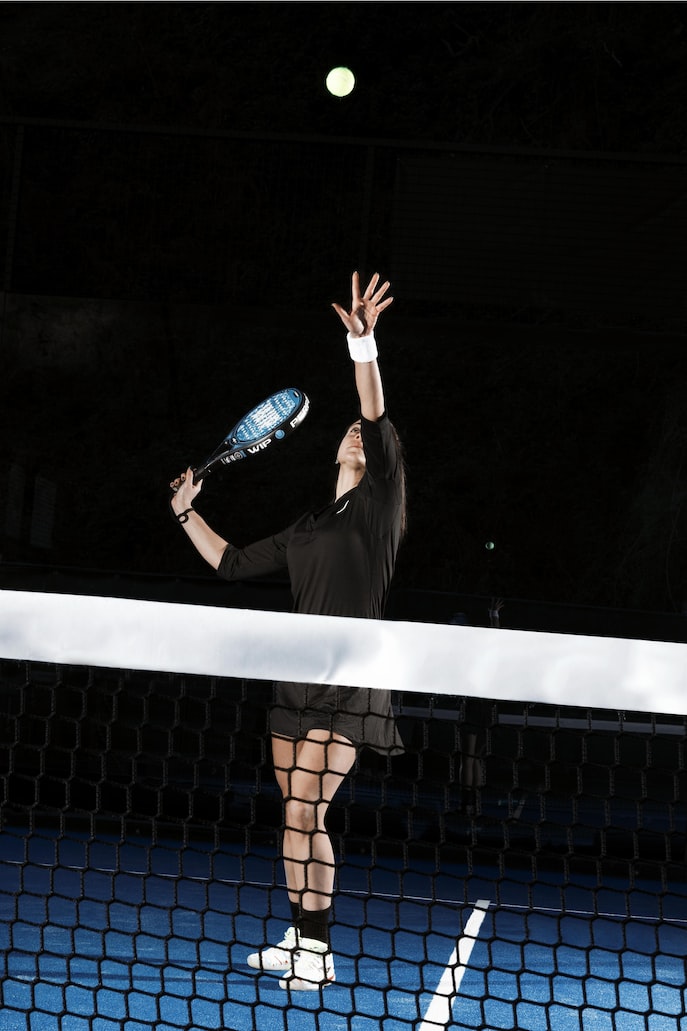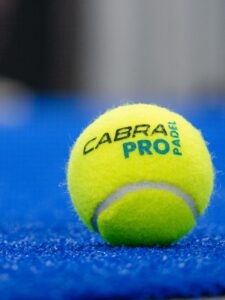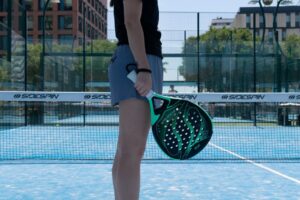Forehand vs. Backhand in Padel: Which is Better?
3 min read
Forehand vs. Backhand in Padel: Which is Better?
When it comes to the wonderful world of padel, the battle between forehand and backhand is one that’s raged on for years. Just like in tennis, these two shots are the bread and butter of any padel player’s game. But which one is superior? Today, we’re going to dissect the forehand and backhand techniques, compare their strengths and weaknesses, and determine which one comes out on top.
What is a Forehand in Padel?
The forehand shot in padel is all about power, control, and finesse. It involves striking the ball with the face of the racquet facing forward and your dominant hand leading the shot. This technique allows players to generate incredible speed and spin, making it a formidable weapon in any game.
When executing a forehand in padel, your body should rotate, weight shifting from your back foot to your front foot. This movement helps generate more power behind the shot and allows for greater accuracy and control. The forehand is typically used when the ball is on the same side as your dominant hand, making it the go-to shot for most players.
What is a Backhand in Padel?
The backhand shot, on the other hand, is often considered the more challenging of the two techniques. It requires players to strike the ball with the back of their dominant hand, using their non-dominant hand to guide the shot. While the backhand may seem daunting at first, many players find it to be a highly effective tool once mastered.
As with the forehand, the backhand in padel also involves a rotation of the body, weight transferring from the back foot to the front foot. This movement aids in generating power and achieving better control over the shot. The main difference is the orientation of the racquet, as it faces backwards during the execution of a backhand.
Strengths and Weaknesses
Now that we’ve explored the basics of both shots, let’s dive into the strengths and weaknesses of each technique, helping us determine a clear winner:
Forehand Strengths:
The forehand shot, with its face-on contact, allows for greater power and spin on the ball. It is easier to generate speed and control, making it a reliable weapon for offensive plays. The forehand also offers a wider range of angles and trajectories, enabling players to hit winners from various positions on the court.
Forehand Weaknesses:
One of the downsides of the forehand is its susceptibility to cross-court shots. Due to the limited reach of the dominant hand, players may struggle to defend against wide shots that stretch them towards their backhand side. Additionally, the forehand can sometimes be predictable and more easily read by opponents, reducing its effectiveness in certain situations.
Backhand Strengths:
The backhand shot is particularly useful when faced with low balls or shots that force players to stretch towards their non-dominant side. It can be a surprising shot that catches opponents off guard, providing a strategic advantage. Once mastered, the backhand allows for good accuracy and control, often resulting in precise placements that can be difficult to defend against.
Backhand Weaknesses:
The backhand tends to lack the power and spin of the forehand. Generating speed and controlling the ball can be more challenging, especially for beginners. Additionally, the backhand may require more precise footwork and body positioning to execute properly, making it a more technically demanding shot.
So, Which is Better?
After carefully examining the strengths and weaknesses of both the forehand and backhand shots, it’s safe to say that there is no definitive answer to which is better. The choice ultimately depends on personal preference, playing style, and the specific situation on the court.
While the forehand may be the go-to shot for most players, the backhand has its own unique advantages that can come in handy when facing certain challenges. Some players choose to specialize in one technique, honing it to perfection, while others strive for a balanced proficiency in both.
Ultimately, the key to success in padel lies in mastering both the forehand and backhand shots. Understanding their strengths and weaknesses allows players to adapt to different game scenarios and become well-rounded competitors. So, whether you choose to dominate with your forehand or surprise opponents with your backhand, remember that variety is the spice of life (and padel!).







